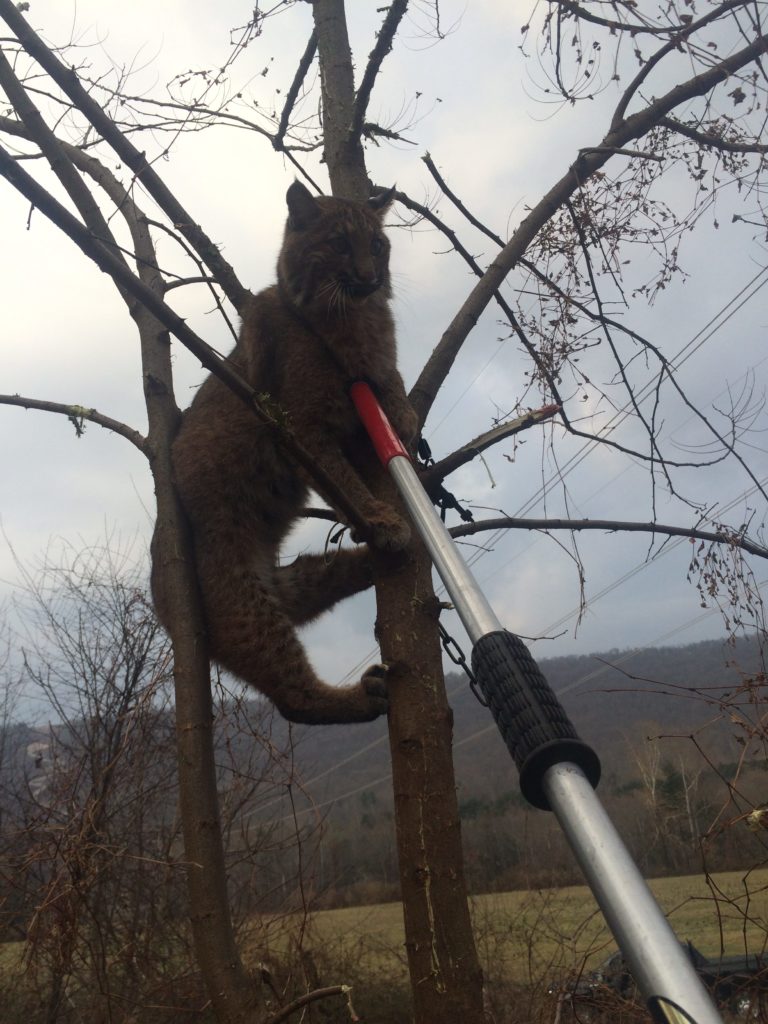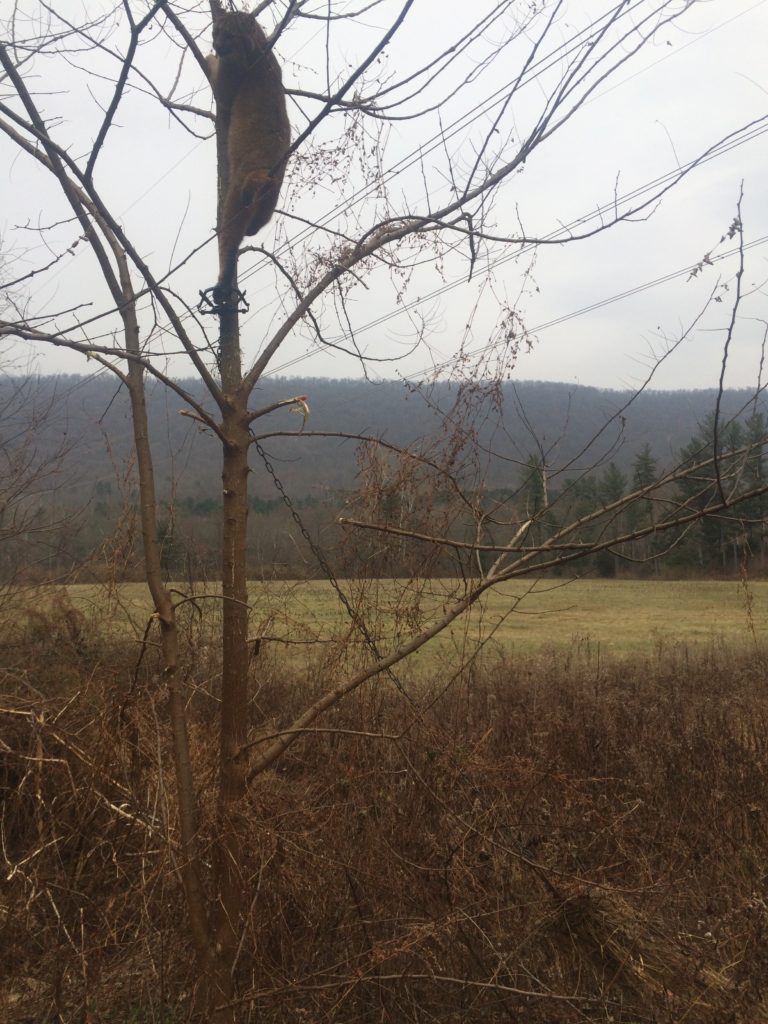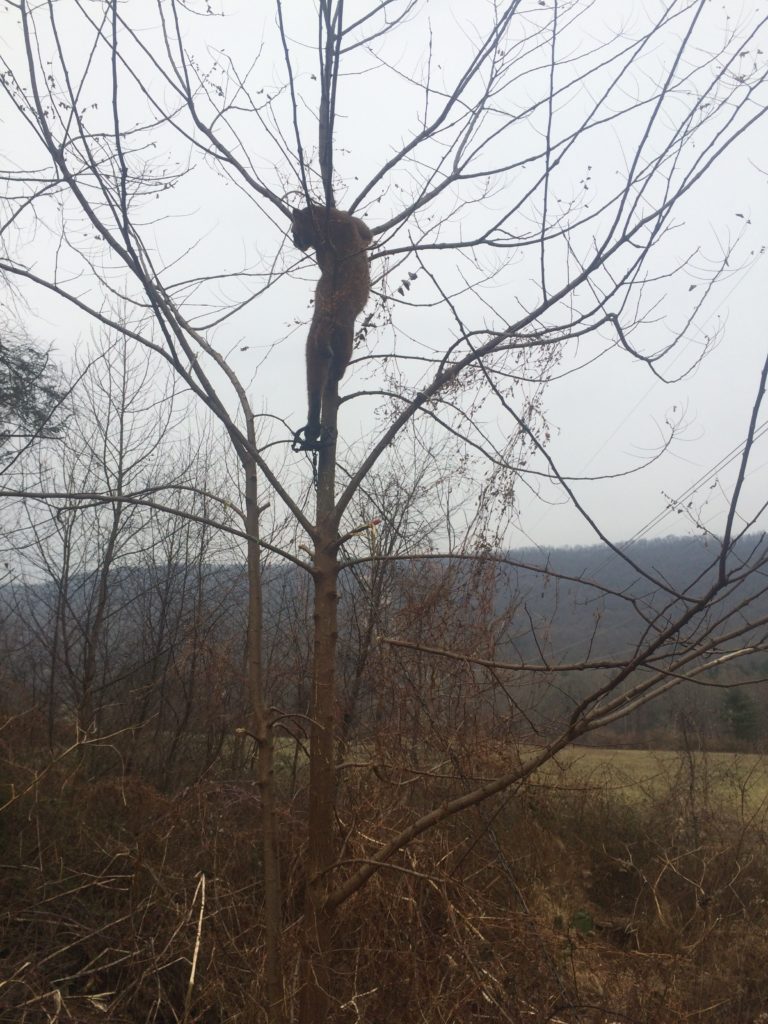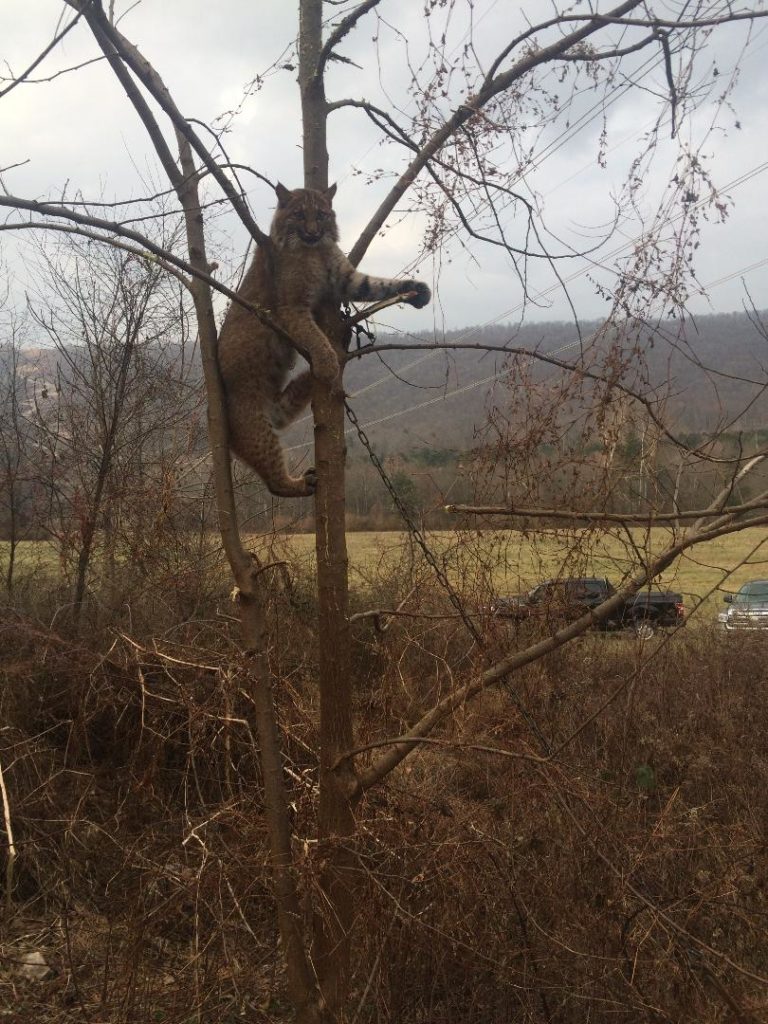Posts Tagged → wife
Irv’s summertime camping gear recommendations
Summertime Camping Equipment Review
The good, the bad, and the ugly….maybe
by
Irving Krasnoshtayn, Special Guest at joshfirst.com
When I was a kid, my family did not go camping. There was nowhere to go. The “open space” in Brooklyn, New York, was the little crack between the concrete slabs on every sidewalk where small sprouts of grass grow. Football, hockey, even baseball games were played in the street or in a crowded public park if one was near enough. People in tents were known as homeless. The first time I went camping was with a bunch of college friends over 20 years ago. It was a poorly planned and ragtag experiment, by guys with more spirit than knowledge. We brought an axe and chopped our own firewood, and then thought we were real outdoorsmen. More than anything we all got giant blisters on our soft city hands. Lots of things have changed since then, but my enjoyment of camping only grew from that one fun misadventure.
Fast forward just a few years and now I am the dad with little kids who excitedly ask me about camping over summer vacation. But unlike my childhood, society today is a lot more mobile, and outdoor recreation is a lot more widespread, common, and much more easily accessible. When you have a couple kids and a wife, you have to think not only about the easy, happy family coziness, fresh air, and the sunshine aspects of camping, but also about everyone being comfortable, repelling bugs, people going potty in the middle of the night, and having decent food. Meeting all of those goals with a family means that we get to try out a lot of camping gear, albeit mostly car camping and not always wilderness treks. Our destinations are usually commercial campgrounds and state and county parks. So here’s my honest review of some things I rely on when family camping. I know there are plenty of dads and moms out there who are hungry for this kind of information. Links to many of these items are below.
Tents: I have two tents, each costing around $100. One a six-person and the other an eight-person, both made by Coleman. But those sizes are a lie because each tent fits two people fewer than advertised, especially with all their gear. You have to think about keeping your stuff dry inside the tent in bad weather, so a backpack takes up the space of a person.
These Coleman tents are relatively easy to set up and they have been reliable. But buy a bigger tent than you think you need, unless you will be backpacking it on a mountain. In which case you will want the absolute lightest gear, which is a whole other story. Use strong steel stakes, they don’t bend as easily as aluminum and last longer. I also put down a cheap tarp on the ground slightly larger than the tent, to take off shoes before we get into the tent and to protect the bottom and keep it from tearing.
Sleeping bags: I have owned more sleeping bags than I can count on both hands. This key part of camping has been a long process for me, and I hope you can learn from my mistakes. In the course of learning sleeping lessons while camping the hard way, I have discovered I really don’t like mummy bags. Mummy bags are sold as a common camping cure-all, but they best fit small framed and narrowly proportioned people, while I want room for my tree trunk legs and wide shoulders. Don’t buy a bag from an unheard of company, like I have, while trying to save money; you will end up paying the real price in comfort and enjoyment, which is worth more than money. At the lower end of the price range, say around $40, Coleman makes decent sleeping bags. Some have cotton lining, some nylon, some acrylic, some flannel, but either way make sure you like the particular material against your skin before you walk out of the store with the bag. I have used everything from 20 degree bags to 50 degree bags, and absolutely none are as warm or breathable as they claim. Until you test your bag and understand its real limits, make sure you bring extra base clothing to keep warm at night. A drinking bottle filed with hot water can help overnight. Coleman’s Brazos is a decent model. A stuff sack for storing the sleeping bag short term is great to have too. To preserve their fill loft, sleeping bags must be stored long term either hung up hanging freely, or in large sacks that do not compress them.
Sleeping pads: One of the most important things I have bought for camping is a sleeping pad. I like a comfy sleep, what can I say. Once you sleep somewhere rocky you will understand why a good sleeping pad is important. Besides, I’m getting old and want to be comfortable. Walmart sells a cheap roll up pad like the military uses that is about a half an inch thick, and that is the minimum I would recommend. I highly recommend the best pad you can afford, either closed cell foam or inflatable. I have one for each family member of different types and thicknesses. The egg crate type is not bad but I prefer a firm type made of open/closed cell foam.
I own a few self-inflating pads but I’m afraid they might develop a hole and deflate like happened to me once. I like reliability, which the closed cell foam has.
Pillow: When camping with our car, we bring our pillows from home. When backpacking I take one of two inflatable pillows, but some people just bring a pillow case and stuff it with their clothing. That works.
Fire: Although I own many axes, such as the decent Cold Steel axe, I now rarely use one while camping. Instead I use a few different saws to get my firewood. Silky saws of Japan makes the best saws money can buy. The Silky Gomboy with medium teeth is the most comfortable and fastest cutting saw I know of besides using a chainsaw. Their teeth are wider than the spine so they cut very well and don’t bind. They are a pleasure to use but have been known to snap if used forcefully. Take your time and let the saw do the work. They can be found on sale for around $40 and like all good kit, are well worth it. Get the largest one you can afford. “Project Farm” of youtube fame recommended another couple of saws. I will be “real world” testing them soon.
Fire Starting: This is something I have practiced extensively and have found campers need to carry more than one way to start a fire, and know how to use each one. Yes, Bic lighters are a go-to but when it is freezing, snowing, or raining they may not work. Always carry your Bic/gas lighters on your person in a pocket, and NOT in your pack. The reason is your body will keep the lighter warm and the contents in a fluid and flammable state. If the lighter is really cold, the butane will not turn into a gas when you try to light it and it won’t work. Zippo lighters are okay as long as they don’t get wet or leak.
Wind is another reason I don’t rely on gas lighters or survival matches. If you do buy survival matches, make sure the container is waterproof and they are the type that can stay lit underwater. Yes they make those. I used a waterproof pill container filled with LIFEBOAT matches and cotton balls for my kids.
I have made videos throwing every type of lighter or match into a half foot of snow or a bucket of water, and the only thing that was reliable was a Ferrocerium rod. Known as a Ferro rod, I now buy them in bulk and make handles for them out of spent rifle cases. Use the spine of your knife and you will make all the sparks you need to start a fire.
At home I prepare a few cotton balls dipped into Vaseline, and store them in a small Ziploc bag. They have the added benefit of protecting your skin/hands. A Ferro rod will light one immediately and the Vaseline in it will burn for a good minute or two, if not longer. I will sometimes make feather sticks which a Ferro rod will also easily light if done correctly. I own magnesium fire starters, and they work, but they aren’t necessary. Again if it’s windy, the magnesium will often get blown away. Some people like to use military trioxane, but this extra expense is not necessary.
Camp chair: Bring a chair for each person if you can. This is advice that is easy when car camping and very difficult while backpacking. I have not yet found a lightweight folding chair that I like.
Cooking: I have spent hundreds of dollars on a titanium stove and the latest everything else for cooking, and have concluded just a few items are all I need to cook good food while camping. Stanley makes a $30-$40 frying pan kit which is worth it. Titanium frying pans which I own are lightweight but develop hotspots that then cook unevenly. The Stanley frying pan kit cooks everything evenly and comes with two plates, and a take-apart spatula that is almost priceless. Stanley also makes a few other kits including a pot kit and a mug/cup kit which are also very good. I have used them all extensively, and they develop a blackened bottom with open fires. Someone scientifically tested blackened pots and it will boil water approximately a minute faster because it absorbs the heat better. I have a lightweight folding stainless steel grate for chicken, hot dogs and burgers. Works great. I like a titanium cup for quickly boiling water for making tea or a ramen type meal. Lightweight Titanium spoons and forks are also worth buying. Better than any plastic.
Stoves: I like and own many packable wood stoves. The Solo stove is GOOD. It burns wood very efficiently and fast. Sometimes too fast, so you will need a lot of twigs on hand because it doesn’t hold much and you have to keep adding to keep the fire going. Esbit stoves don’t heat up enough for my liking and alcohol stoves might work, but I don’t want to carry alcohol that I can’t drink. Firebox makes quite possibly the best balance of reliability, compactness, yet high capacity wood burning stove on the market. It is amazing and I highly recommend it. The Firebox Nano model is tiny yet unfolds large enough to cook a morning meal without any fuss.
Cooler: I prefer hard sided coolers, because they keep their shape and hold ice overnight, even in the hottest summers. They also repel the sharp claws of raccoons.
Lighting: You will need to see when it gets dark. I prefer headlamps over flashlights because they keep both hands free. I bring one for each person, even the kids. I give out glow sticks just to see where other people are. Any headlamp over 200 lumens is good. Wide beams are more useful for close range. In my work as an electrician, I use headlamps every single day. The cheaper brands have always failed me because they use cheap circuitry and switches that eventually fail just when you need them most. Energizer makes many excellent headlamps.
Eveready makes a good model for $10. On the higher end, Petzl, Streamlight, Black Diamond, Fenix, Surefire and many others make very good lights. Don’t buy a crappy light, because you don’t need to. The good ones don’t cost much more than the really bad ones. I don’t use rechargeable batteries when camping, because unless you have solar panels how are you going to charge it? I’m not going to carry a battery power bank. I bring an extra set of fresh batteries. [Editor’s note: I have used two different Anker solar chargers on long distance ten-day backpacking trips and they work well when matched with the right battery – JF]
Rope: Buy some paracord and keep it in different places where you might need ten or twenty feet of it. Home Depot sells a decent paracord. The brighter colors are better, because your eye will see them and stop your feet before you trip over them when they are guyed out around a tent or a tarp shelter. Also useful for tying down your stuff in strong wind.
Duct Tape: I like gorilla tape. It sticks better than any duct tape I have ever used. Wrap a few feet around something like your lighter.
Multitool: I prefer Leatherman. The wingman model has scissors, a pocket clip, and is relatively light.
And finally, knives: Few outdoor items are more iconic or representative of camping than a fixed blade knife or one of the newfangled, robust, easy-open folding knives. Everyone has different sized hands and skin, so everyone prefers a different handle material and shape, and thicker or thinner, longer or shorter. There are so many knives on the market, I should begin by telling everyone to always carry a pocketknife. Preferably one with a locking mechanism so it doesn’t accidentally close on your fingers. Swiss army knives are OK for home use, but I don’t prefer them as a daily pocket carry.
Fixed blades are also necessary. I’ll start by recommending the least expensive of the bunch, Mora knives of Sweden. They are the best bang for your dollar at the moment. I recommend stainless steel over carbon steel so that your knife won’t rust, and if there is one thing you are guaranteed of on a camping trip, it is that your knife will get wet and it won’t get put away dry.
At around $20, the Mora companion model is a great knife for many reasons. It has a comfortable handle and an excellent sheath which clips onto your belt without you having to take it off. Mora uses a Scandinavian grind on their knives, which is excellent for “Bushcraft” type work, which is a variety of light to heavy utility work, plus food preparation. I prefer full flat grinds which are much more versatile, particularly for food preparation.
ESEE knives have an unconditional lifetime guarantee. They come in 1095 high carbon steel which may rust if not cared for. (Use vaseline from the cotton balls or plain mineral oil to prevent rust)
I used the ESEE 4HM model (~$120) for an entire camping trip and found it excelled at everything. GREAT knife.
In the Outdoors, the sheath is just as important as the knife.
First Aid Kit: Always carry some type of first aid kit and know how to use it. I was an EMT, and based on my experience I think everyone should at least learn the basics. Know how to stop bleeding with pressure or how to stabilize/support a sprained ankle. Accidents happen, be prepared, and having a good first aid kit is step one in being prepared. Car camping first aid kits can be almost like a mobile field hospital in size, and backpacking first aid kits must be streamlined and geared towards treating foot blisters, burns, and knife cuts.
I put together my own first aid kit in a one- gallon waterproof Ziploc bag, including everything from Band-Aids to gloves and gauze to common medications like ibuprofen and aspirin.
Have a great summer camping with your family!
LINKS:
tents:
sleeping bags:
| Coleman Green Valley 30°F Cool-Weather … |
sleeping pads:
Foam Sleep Pad- Extra Thick Camping Mat for Cots, Tents, Sleeping Bags & Sleepovers
Saws:
Silky GomBoy Professional Folding Saw 240mm Medium Teeth (121-24)
| Silky GomBoy Professional Folding Saw 2… |
Samurai KISI FC-240-LH / 9 1/2″ (24cm) Folding Curved Blade Saw Made in Japan
| Samurai KISI FC-240-LH / 9 1/2″ (24cm) … |
Fire making:
Cooking: pots pans
Stoves:
| Lite Camp Stove | Solo Stove |
|
Headlamps:
Knives:
ESEE 4HM Fixed Blade Knife w/ Kydex Sheath & Micarta Handle
| ESEE 4HM Fixed Blade Knife w/ Kydex She… |
This day a year ago while trapping: Cat up a tree!
Cat Up a Tree!
Text and Photos by Josh First (copyrighted)
I dislike trapping in rainy conditions, because it is uncomfortable, messy, and technically difficult, due to trap sets needing constant fixing up; and I really dislike processing muddy critters. Mud-covered fur is time consuming, and usually it is not worth it in my tight schedule. So from 2018’s trapping season opening day in late October, I waited six weeks, until a brief rain lull in mid-December, to put out some carefully planned traps.
Though I was aiming mostly for canids like fox and coyote, both bobcat and fisher were a reasonable hope. I have caught bobcats in and out of season in the past, but never a fisher. These are two neat animals worth working hard for, and each of which will quite willingly enter baited cubbies where foot hold traps can get some shelter from rain and snow.
So on the Wednesday afternoon before that Saturday bobcat and fisher opener, a half-dozen footholds (cubbies and flat sets) and a few large cage traps were set in strategic places near where I had seen fisher tracks or bobcats across a 100-acre area of mixed farmland and woods in Dauphin County. Bait is used in the cage traps to pull in the inevitable and limitless possums, skunks, and raccoons, so that, hopefully, only the cool critters find the footholds. And both bobcats and fishers will enter cage traps, so they do serve double duty.
One pass-through pee post set was put in a location where I have previously caught coyotes, foxes, and raccoons. It is at a corner of a dirt farm road, a woods road, a hay field, and brushy-hedged crop field where heavy woods meets an active agricultural area. Just about every local furbearer walks the brushy area, this road, and the field edges leading to it.
Coyote pee and coyote gland lure were put on top of a two-inch-thick dry pine limb sticking up 14 inches, placed at the seam where the goldenrod meets the farm road. A few pieces of goldenrod stem on the other side created the pass-through effect, so the animal’s body would line up with the hidden trap just exactly so. About eight inches away from the post an offset MB 550 attached to an eight-foot heavy chain linked to a heavy two-prong coyote drag was bedded level atop soft goldenrod tops to protect the trap from freezing to the wet dirt underneath, then covered judiciously in waxed dirt, then finished with more soft goldenrod tops and weed tips blended on top. The trap was perfectly “blended in” and hidden from sight.
The chain was stretched out away, into the reverting goldenrod field, and well covered and camouflaged with weeds, and the rusty-brown colored steel drag itself unobtrusively hooked into the dirt. With four heavy swivels well spaced between the trap and the drag, I felt confident that whatever would step on the trap pan while passing between the weeds to smell the pee post would commit its full weight, and be safely held fast, no matter where it went afterwards. I expected the animal to head directly to the nearby brushy hedges, where the grapple and chain would immediately become entangled, thereby holding the animal for the next 24-hour trap check.
Usually predators take a couple days to fully investigate my traps, and when setting this on a late Wednesday, I anticipated catching something in one of the sets on Friday night/ early Saturday morning. Though aiming for a bobcat, fox, coyote, or fisher, the truth is I had put off trapping so long that season that I would have been happy to catch just about anything.
The next day, Thursday, I did a cursory trap circuit check in my truck, looking out the window while driving past set after set. “No…No…No…footprints all around but no step on the pan…no…no…nothing” as I went by each trap location.
Pulling up to the pee post set, my eye was immediately drawn to the pee post itself lying on the ground, though the trap bed itself did not appear disturbed. Usually the post is knocked over by the chain after an animal has stepped on the trap and fled. So I got out to check, and was not surprised to see the drag gone. Following an obvious path of bent weeds and scuffed dirt leading away towards the closest brushy forest edge, my eyes naturally looked along that edge for a hung-up drag and critter.
With my hands on my hips, I stood and kept scanning the brushy woods-field edge. I was unable to locate anything, and felt mystified about how the critter could have escaped beyond such a thick, natural entanglement area. Mystery remained until a hiss to my right reached my ear, steering my eyes in that direction.
“Why is that long-legged grey fox up in that honey locust like that?” was my first thought.
Then another thought followed the first: “Why does that grey fox look like a big cat?”
And then the bobcat came into focus. It was a nice sized young male, probably 25 pounds, about six feet up in a young honey locust, a tree that has plenty of sharp thorns and very hard wood. The drag was just touching the ground, and the chain was wound about the lowest branches.
OK, I thought, I’ll have this resolved in a few minutes. Seemed like no big deal to pull down the cat, use the catch pole to hold it steady while I released the trap from its foot and let it go unharmed.
Fast forward an hour, and each time I had tried different ways to bring it down out of the tree unharmed, the cat had moved farther up. With bobcat season two days away, by law the cat had to be released, but I was unsuccessful with each solution I tried.
Fretting and scratched by the locust thorns, I left, did some work, and returned a few hours later, hoping the cat had climbed down and was entangled in the ground brush nearby. On the ground it would be easy to release using a catch pole. Easier than up that tree!
But when I got back, the bobcat was still up the tree, and climbed yet higher as I approached it.
Time for Plan B, which is where I admit that I need help. Usually takes me a long, long time to implement Plan B, and so I called the Pennsylvania Game Commission southeastern regional office. At first the dispatcher congratulated me on catching the bobcat, but then moments later expressed his sympathy for me having to release such a fine trophy, as the season was yet to begin. He forwarded my message to a local Game Warden, who then fairly quickly met me right at the honey locust. In fact, he arrived so quickly that I could not help but wonder if he had been watching me the whole time, either chuckling at my clumsy efforts, or waiting to see what else I might do, or both.
“Thank you for coming. When my kids were little, their favorite book was Cat Up a Tree! And here it is in real life. Should we call the fire department?” I said to Game Warden Scott Frederick, half-jokingly. In that colorful book, the fire department saves the day by saving the cat stuck up in the tree, and we (and how I so liked the ‘we’ part) did indeed have a daggone cat way up in a tree. But unlike the book, we had no long ladders, or hero firemen, by the honey locust tree that day.
I asked my wife to film our escapade, but under questioning I revealed that pretty much anything could happen to anybody around this, so she said something like “No, I’m not recording two idiot men playing with matches.” I think her imagination had the warden and I emerging from the dense, high brush scratched head to toe, our clothes in ragged tatters, like some cartoon involving the Looney Tunes Tasmanian Devil. She wanted no part of it. This is why women live longer than men.
Warden Frederick tried to the untangle the chain and reach the animal, but with each new inch of loose chain, the bobcat sensed freedom and used the slack to climb ever higher. Upon reaching a tight chain again, he would stop his ascent, alternating between hissing at us and letting fly with whatever he could rustle up in his bowels. I came to learn that bobcats have an impressive amount and array of bad smells stored inside them. Neither Warden Frederick nor I smelled peachy at that point, but I gave in and laughed at him when he really got it good from the cat.
Eventually we had tried and tried every which way to get the cat down unharmed, the day waxed late, and so we decided that if the cat would not come down, then the tree had to come down.
A honey locust is a hard, tough tree, a pioneer species with twisting grain and sharp hooked thorns. Oftimes while being sawed, they don’t fall the way you think they will. In addition to its loud scary noise, a chain saw would remove too much wood too quickly to allow us to fully control which way the tree would fall, and a hand saw was too slow. So we used an axe to drop the tree, one carefully placed chop at a time. This gave us the best control over the tree’s slow descent, but it was sweaty work, and directly beneath the bobcat. So I let Warden Frederick do it.
Meanwhile, the bobcat climbed to the very top of the tree, clinging like a lookout in a ship’s crow’s nest, and swayed to the rhythm of the chop-chop-chop below.
As the tree gave way to the axe and slowly sank to the ground, the bobcat sensed its getaway approaching. But Warden Frederick was waiting with a catch pole. While I wish I had some humorous Game News Field Note material here to describe what happened next, the truth is Warden Frederick properly and quickly looped the bobcat’s shoulder and neck, under the armpit, thereby safely pinning the animal to the ground without risk to its esophagus (cats have really weak throat areas and they must be handled carefully). I got some last quick photos, threw a blanket over the bobcat to calm him down (the bobcat, not Warden Frederick), and then easily pulled the trap off of its foot.
Both of us inspected its foot and leg for damage, and seeing none, I stepped back, pulled the blanket, and the catch pole loop came off the bobcat. As many other trappers have experienced when releasing a trapped bobcat, this one sat on its haunches and hissed at us. He thought he was still stuck. Eventually he turned and fast- walked into the brush.
“Well, that’s it, I’m now officially jinxed, or ‘lynxed’,” I said to Warden Frederick. “From here on out I will catch only possums and skunks for the rest of the season.”
And in fact, for the rest of that epic rainy trapping season, such as it was, I caught a grand total of just five possums, one skunk, and one raccoon. It was my worst trapping season, numbers-wise, in many years. But in hindsight, it was also pretty rewarding to watch the Game Warden work like that. Both hard and smart, I mean. Citizens don’t get to see our public servants perform these kinds of feats very often, and with a good nature to boot. So in that sense, I had a uniquely good season. Thank you, Warden Frederick. Now I can’t wait for mountain lions to move into Pennsylvania!
[Why do I trap? I trap to save ducklings, goslings, baby songbirds, nesting grouse, woodcock, and turkeys from an endless number of ground predators like skunks, possums, raccoons, foxes and coyotes, all of which continue to pulse out from suburban sprawl habitats in artificially high numbers. These artificially high numbers of predators do tremendous damage to ground nesting birds, and basically cars and trappers are their sole adversaries. So if you are against trapping, you must hate cute little ducklings. Foothold traps do not crush bones or kill animals, they simply hold them, and as we can and did here, animals can be released from footholds totally unhurt]
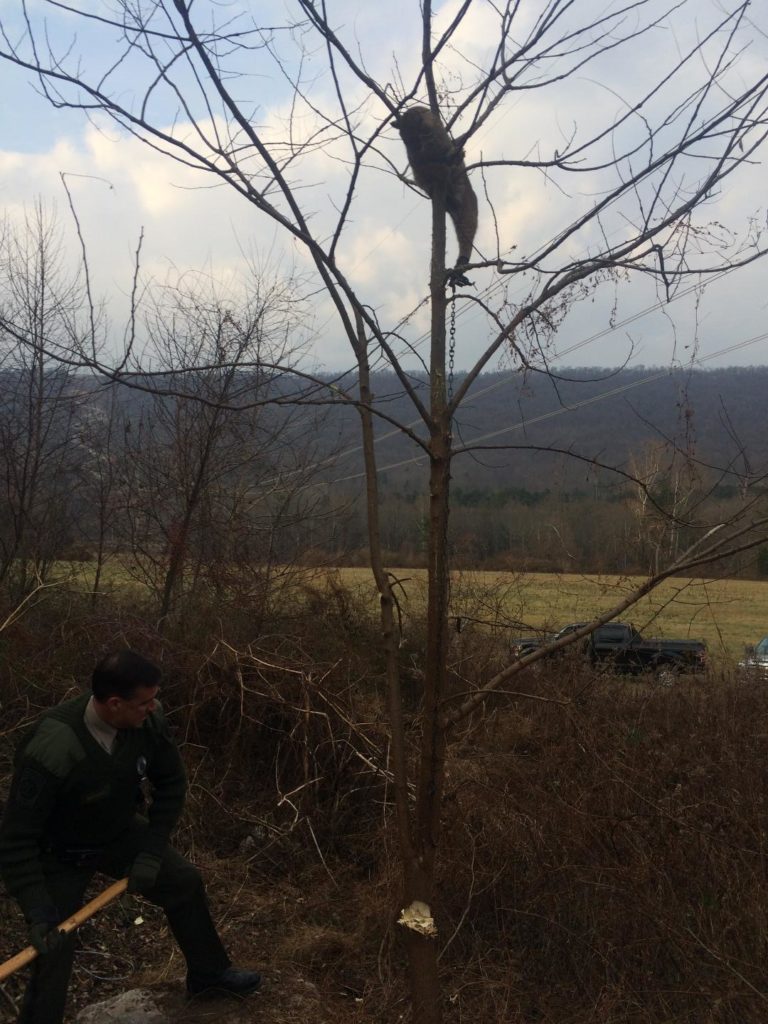
If you ever want to feel like you are getting your tax money’s worth, look closely at this photo of PA Game Warden Frederick chopping at that honey locust. Except that the PA Game Commission operates on hunting license fees, timber sales, and natural gas leases! No tax money goes to the PGC, and yet they provide so many taxpayer services.
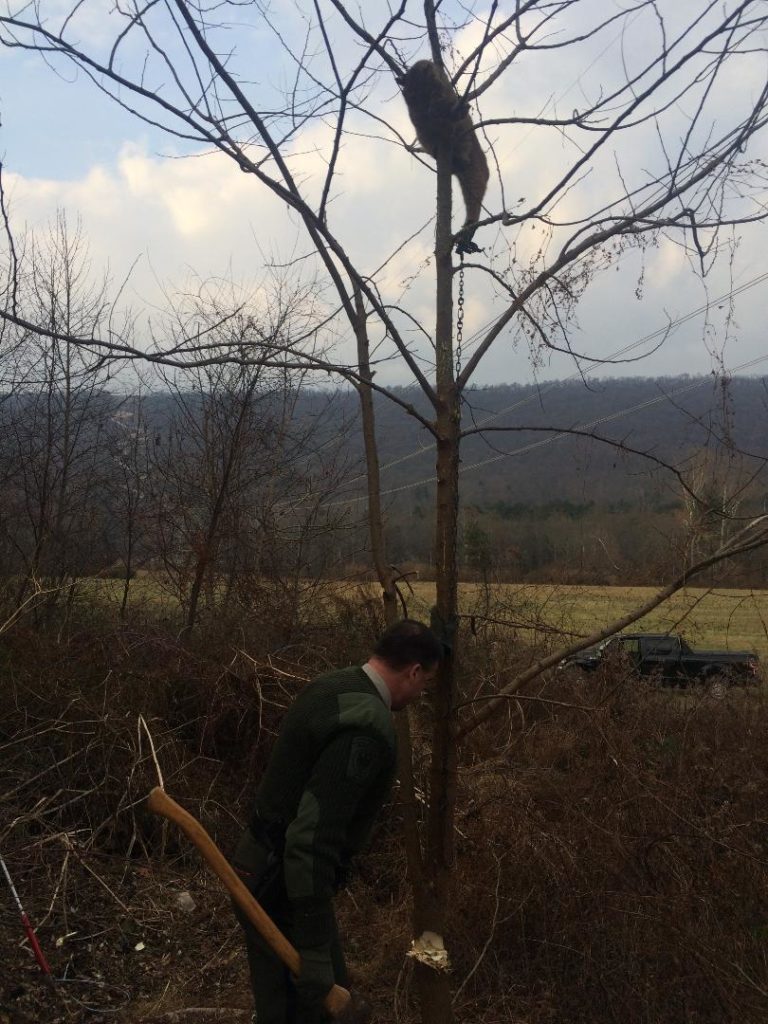
The four swivels and the long chain are visible here. The swivels prevent the chain from binding as the animal moves around, which gives the animal complete 360 degree movement. This is important so the animal does not torque its leg or hurt itself trying to get free. The long chain is needed to get hung up quickly in brush
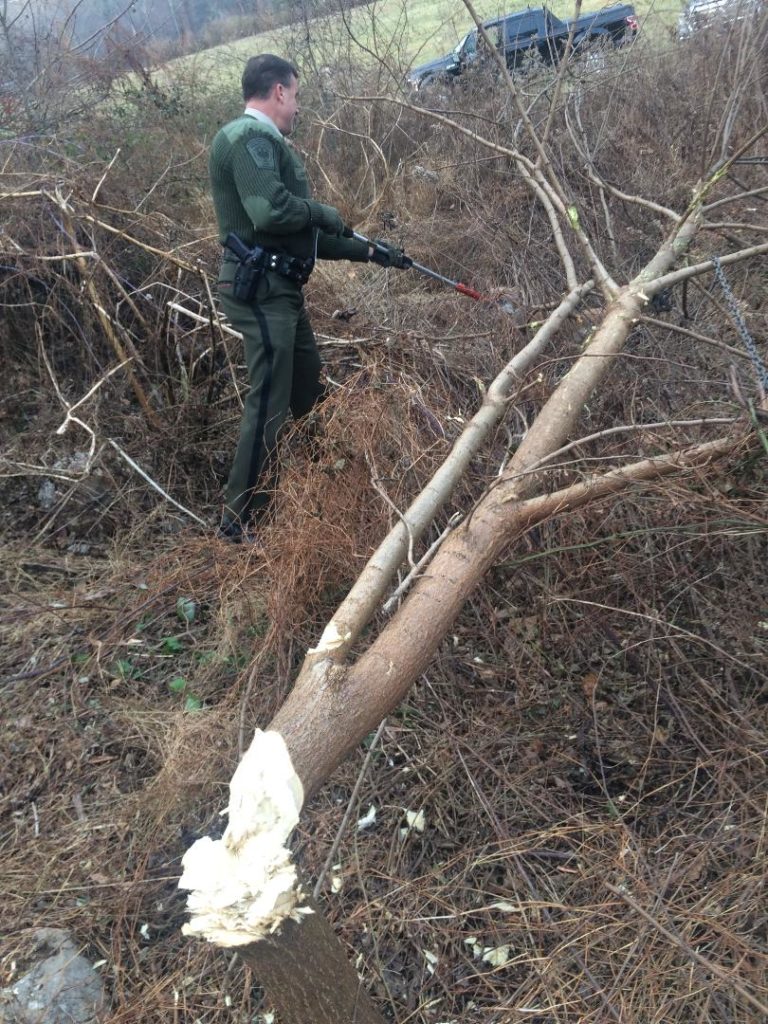
The unharmed bobcat can be seen hissing at Scott, who has the catch pole loop around its upper body, pinning it to the ground. After taking this picture, I threw a blanket (Scott’s, not mine) over it to calm it down, inspected its leg for any damage, and when we each determined the animal was not hurt, Scott then released it. Using a catch pole on a bobcat requires getting the loop under its armpit and around the neck, so the esophagus is not damaged.
We interrupt this marriage to bring you hunting season…
Thank you to my wonderful wife, the Princess of Patience, for letting me hunt so much.
Knowing how many other “hunting widows” there are, I am confident I speak as one with many other appreciative husbands.
US Supreme Court decides straight forward case with weird outcomes
Fernandez v. California was decided yesterday by the US Supreme Court. Everything about it is just…weird.
In a holding that is enraging advocates of private property rights, limited government, and citizen privacy, the Court’s conservatives were joined by two liberals to allow the police to enter a private home without a warrant, even if one resident says they cannot enter, because another resident said they could enter.
In other words, if the police get a resident of a home to grant permission to enter that home for the purpose of searching for something illegal, which the police now do not have to specify in writing, the police may enter. What they are looking for could be unknown, or undocumented. Maybe they are on a fishing expedition, just looking for anything they could use against the person who said they did not want the police to enter. It seems like planting evidence would be a lot easier, now. In any event, your home is no longer your castle, if a pissed off teenager inside decides to take out their misplaced teenage aggression against their loving parents.
Seems like a recipe for disaster.
Justice Ginsburg wrote a dissent, noting the obvious erosion in Fourth Amendment rights against illegal searches and seizures that result from holdings like this. Ginsburg is the court’s most liberal member, an extremist who has spoken out against the US Constitution she is sworn to uphold, and an authoritarian statist who otherwise just loves, loves, loves state power over citizens.
And here’s the really weird stuff: The facts involve “illegal guns,” which in California is anything down to and including a Daisy BB gun, and documented domestic violence.
The person blocking the police from entering the home to search it was the Mr. Wife-Beating Fernandez, a scumbag who held his cringing wife prisoner under brutal circumstances. After he was momentarily out of the picture and not a direct threat, she allowed the police to search the house, where they found the illegal guns (let’s be clear – California is on the path to making all gun ownership illegal, except by the police, which is otherwise known as a police state, a separate topic).
Thus did Mr. Macho Wife Beater get into even more and more serious trouble with the legal system, and thus did he subsequently attempt to suppress the evidence the police found, which really put him away behind bars for a while.
Ginsburg and other liberals typically trumpet the rights of domestic abuse victims, but here they are clearly ranking them beneath the rights of the gun-owning wife beater. Weird.
Conservatives like Alito typically champion the rights of gun owners and are split 50/50 on privacy rights. But here they are so obviously opening up the flood gates of potential abuse by police. No warrant? No documentation for probable cause? Husbands and wives typically cannot testify against each other, but here they are now allowed to defy one another in the family ‘castle’ so the state apparatus may enter at will.
Seems like a pretty huge detonation of American citizens’ privacy rights. Weird.

